

|
This material is presented to ensure timely dissemination of scholarly and technical work. Copyright and all rights therein are retained by authors or by other copyright holders. All person copying this information are expected to adhere to the terms and constraints invoked by each author's copyright. In most cases, these works may not be reposted without the explicit permission of the copyright holder. |
||
 |
Silhouette Rendering for Point-Based Models [pdf], Hui Xu, Minh X. Nguyen, Xiaoru Yuan and Baoquan Chen, Proceedings of the 2004 Eurographics Symposium on Point-Based Graphics (SPBG'04). Jun 2-4, 2004, ETH Zurich, Switzerland. |
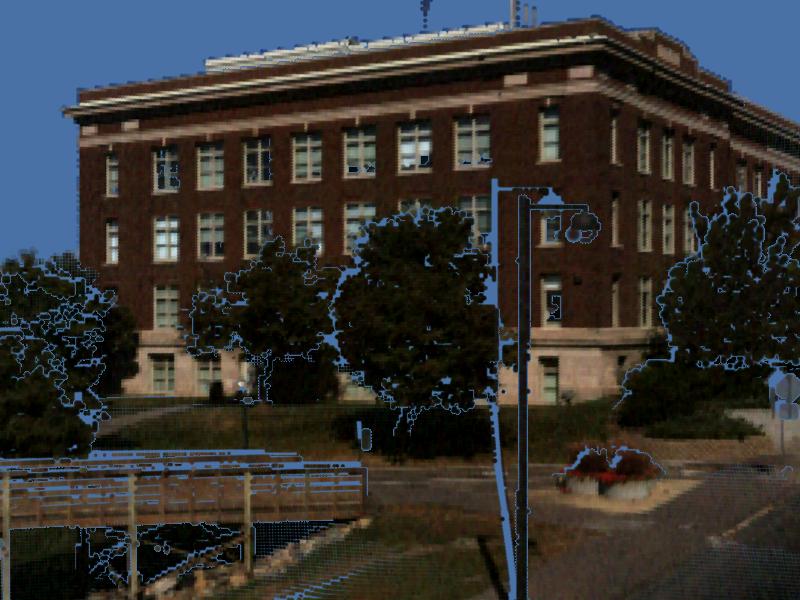 |
ActivePoints: Acquisition, Processing and Navigation of Large Outdoor Environments [ PDF ] Hui Xu and Baoquan Chen. Technical Report, Computer Science Department, TR.03.02. |
 |
Sketch-based Segmentation of Scanned Outdoor Environment Models. [pdf (1.4MB)], , Xiaoru Yuan, Hui Xu, Minh X. Nguyen, Amit Shesh and Baoquan Chen. In Proceeding of the 2nd Eurographics Workshop on Sketch-Based Interfaces and Modeling (SBM'05), Trinity College, Dublin, Ireland, August 28-29, 2005 |
 |
Knowledge-Based Modeling of Laser-Scanned Trees. [pdf (5MB)], Hui Xu, Nathan Gossett and Baoquan Chenn. In SIGGRAPH'05 Sketches, Los Angeles, CA. July-August, 2005. |

|
Visualization capitalizes upon the human visual perception system to intuit large, complex, and abstract data and perceive hidden patterns and trends to facilitate scientific discovery, medical diagnosis, social study, and digital design, to name a few of its applications. A fundamental focus of our research in visualization is to develop methods to both efficiently and effectively depict large and complicated data sets, thereby providing interactive and intuitive data visualization and exploration. Specifically, we focus on achieving visualization that is accurate, illustrative, interactive, and easy to interface. |
|
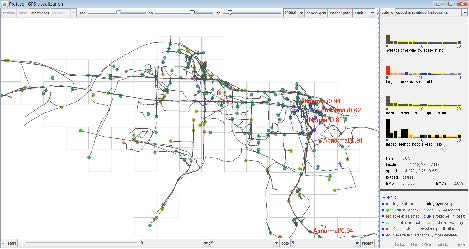 |
Anomaly Detection in GPS data Based on Visual Analytics [ pdf(1.5MB)] Zicheng Liao, Yizhou Yu, Baoquan Chen. 2010 IEEE Conference on Visual Analytics Science and Technology (IEEE VAST), Salt Lake City, October 2010, pp.51-58. |
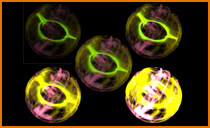 |
Visualization of High Dynamic Range Data in Geosciences Xiaoru Yuan, Yingchun Liu, Baoquan Chen, David A. Yuen and Tomas Pergler, Physics of the Earth and Planetary Interiors (PEPI), 2007. Elsevier. (In Press) [pdf] |
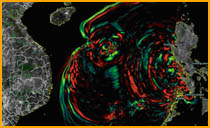 |
An Efficient Method for Creating InSaR-like Images Xiaoru Yuan, Yingchun Liu, David A. Yuen, Baoquan Chen, Tomas Pergler and Yaolin Shi, Pure and Applied Geophysics (PAGEOPH), 2007. Springer. [pdf] |
 |
Visualization of Rupture Fault Simulation Inspired by Light Interference Xiaoru Yuan, Minh X. Nguyen, Yingchun Liu, David A. Yuen, Baoquan Chen and Yaolin Shi IEEE Conference on Visualization 2006 (VIS'06) (Best Poster Candidate), Baltimore, MD. USA. October 29- November 3, 2006. |
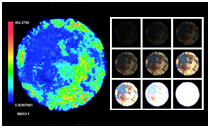 |
High Dynamic Range Volume Visualization Introducing an interactive high dynamic range volume visualization framework (HDR VolVis) for visualizing volumetric data with both high spatial and intensity resolutions, such as 2,048^3 and 16bits per voxel. [ pdf], Xiaoru Yuan, Minh X. Nguyen, Baoquan Chen and David H. Porter In Proceedings of IEEE Visualization 2005 Minneapolis, MN, USA. Oct 23 - 28, 2005. Best Paper (Application Category) An expanded version [ PDF ] appeared in IEEE Transaction on Visualization and Computer Graphics, vol. 12, no. 4, July/August, 2006. |
 |
Volume Cutout A novel method and system for cutting out 3D volumetric structures based on simple strokes that are drawn directly on volume rendered images. [ pdf (5MB)], Xiaoru Yuan, Nan Zhang, Minh X. Nguyen and Baoquan Chen. In Proceeding of Pacific Graphics (PG'05), Macao, China. Oct 12- 14, 2005. (Special issue of The Visu |
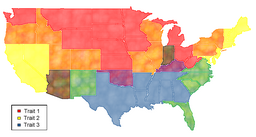 |
Paint Inspired Color Mixing and Compositing for Visualization Color is often used to convey information, and color compositing is often required to visualize multi-variant information. This paper proposes an intuitive method for color compositing so that distinct information is discerniable. [ PDF ] Nathan Gossett and Baoquan Chen. IEEE Information Visualization, Oct. 10-15, 2004, Austin, TX. (Technical report with more thorough acknowledgement and implementation details.) |
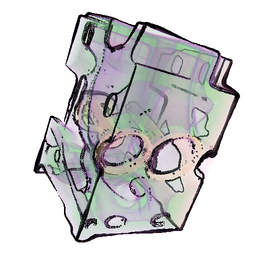 |
Illustrating Surfaces in Volume A novel framework for illustrating surfaces in a volume. Surfaces are illustrated by drawing only feature lines, such as silhouettes, valleys, ridges, and surface hatching strokes, and are embedded in volume renderings. This framework promises effective illustration of both surfaces and volumes without occluding or cluttering each other. [ PDF ] Xiaoru Yuan and Baoquan Chen. Joint EUROGRAPHICS - IEEE TCVG Symposium on Visualization, May 19-21, 2004, Constanz, Germany. |

|
The early stages of conceptual design by graphic and
architectural designers are characterized by ambiguity,
imprecision, and fuzzy intention, all difficult to express
using the current Computer Aided Design (CAD) tools, which
impose constraints of preciseness and are counterintuitive
to use. We aim to develop a sketch-based system that
supports a sketch representation of an early-stage
conceptualization and its later smooth and easy transition
to more precise design stages. This development, together
with our outdoor scanning research [project
site], will ultimately lead to a radically new digital design tool that will accommodate the needs of architectural design in the digital age: design amid the real sites and design by sketching.
We also explore using sketches as an interface for not only modeling, but also various visualization tasks.
|
|
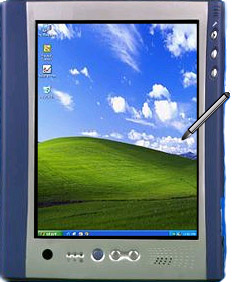
|
SMARTPAPER
A new modeling tool, which capitalizes the newly available Tablet PC technology and provides a traditional pencil and paper experience, but greatly enhances that experience by offering an additional set of key operations, most importantly sketch interpretation and 3D reconstruction. [ PDF ] SMARTPAPER: An Interactive and User Friendly Sketching System, Amit Shesh and Baoquan Chen. Eurographics 2004, Aug 30-Sep 3, Grenoble, France. [ PDF ] User Interface Design and Realization of a Design-by-Sketches System, Amit Shesh and Baoquan Chen. Technical Report, Computer Science Department, TR.04.01. |

|
Peek-in-the-Pic: Architectural Scene Navigation from a
Single Picture Using Line Drawing Cues.
[ pdf (2MB)], , Amit Shesh and Baoquan Chen. In Proceeding of Pacific Graphic (PG'05), Macao, China. Oct 12- 14, 2005. |

|
Artistic illustration, unlike traditional photorealistic rendering, depicts object characteristics of different importance by using different accuracy and drawing styles. Such non-photorealistic rendering (NPR) not only conveys aesthetics but also provide effective visualization. |
|
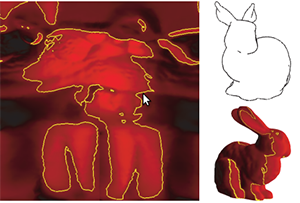 |
Stippling and Silhouettes Rendering in Geometry-Image Space. [ pdf], Xiaoru Yuan, Minh X. Nguyen, Nan Zhang and Baoquan Chen. In Proceedings of Eurographics Symposium on Rendering (EGSR'05), page 193-200. Konstanz, Germany. June 29-July 1, 2005. |
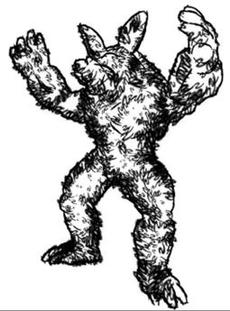
|
Inspire: An Interactive Image-Assisted NPR
System
INSPIRE is a non-photorealistic rendering (NPR) system that features interactive generation of a wide variety of artistic styles for large geometric data. Inspire also promises animation consistency during object navigation. Comparing with conventional physics-based graphics rendering targeting photorealism, stylized rendering can better depict and highlight geometric features, hence is more effective when used for scientific or medical data visualization. [ PDF ] Minh X. Nguyen, Hui Xu, Xiaoru Yuan, and Baoquan Chen. Pacific Graphics, Canmore, Alberta, Canada, October 8-10, 2003. |

|
Optimized geometry representations can not only speed
up graphics processing and rendering, but also facilitate
difficult operation and achieving novel effect.
|
|

|
Raycasting Feature-Enhanced Distance Field
Nan Zhang, Xiaoru Yuan, Baoquan Chen and Huamin Qu IEEE Conference on Visualization 2006 (VIS'06) (Poster). Baltimore, MD. USA. October 29- November 3, 2006. |
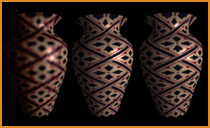
|
TSplatting: Mapping High Quality Textures on Sparse
Point Sets
Xiaoru Yuan, Minh X. Nguyen, Lijun Qu, Baoquan Chen and Gary Meyer Submitted to IEEE Transaction on Visualization and Computer Graphics. |

|
Perceptually Guided Texture Mapping on Points
[ pdf (6.9MB)] , Lijun Qu, Xiaoru Yuan, Minh X. Nguyen, Gary Meyer and Baoquan Chen In Proceeding of the 3rd IEEE/Eurographics Symposium on Point-Based Graphics (PBG06), Pages 95-102. Boston, MA, USA. July 29-30, 2006. |
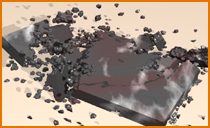
|
Integrating Mesh and Meshfree Methods for
Physics-Based Fracture and Debris Cloud Simulation
[ pdf (3.5MB)] , Nan Zhang, Xiangmin Zhou, Desong Sha, Xiaoru Yuan, Kumar K. Tamma, and Baoquan Chen. In Proceeding of the 3rd IEEE/Eurographics Symposium on Point-Based Graphics (PBG06), Pages 145-154. Boston, MA, USA. July 29-30, 2006. |
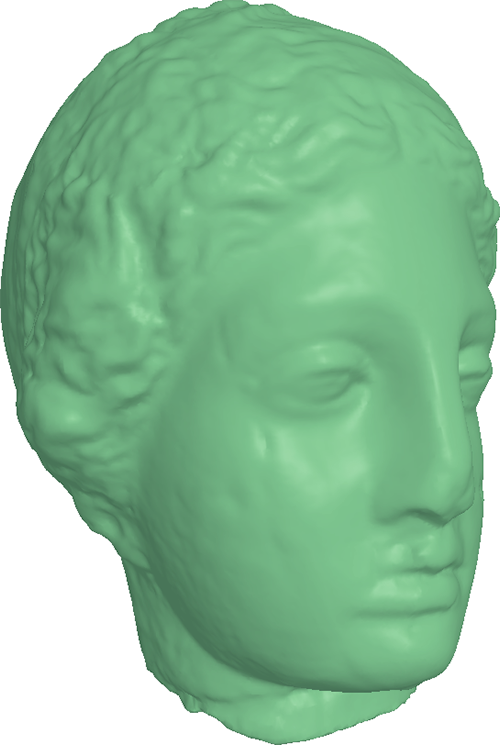 |
Geometry Completion and Detail Generation by Texture Synthesis. [ pdf (9MB)] , Minh X. Nguyen, Xiaoru Yuan and Baoquan Chen. In Proceeding of Pacific Graphics (PG'05), Macao, China. Oct 12- 14, 2005. (Special issue of The Visual Computer, Springer-Verlag.) |
 |
Hybrid Forward Resampling and Volume Rendering The transforming and rendering of discrete objects, such as traditional images (with or without depths) and volumes, can be considered as resampling problem -- objects are reconstructed, transformed, filtered, and finally sampled on screen grids. In resampling practices, discrete samples (pixels, voxels) can be considered either as infinitesimal sample points (simply called points) or samples of a certain size ( splats). Resampling can also be done either forwardly or backwardly in either source domain or target domain. Here we present a framework that features hybrid forward resampling for discrete rendering. Specifically, we apply this framework to enhance image warping (with or without depth) and volumetric splatting. For the latter, methods for efficiently computing a splat's 2D elliptical projection geometry and achieving accurate perspective reconstruction filter have also been developed. The results of our experiments demonstrate both the effectiveness of antialiasing and the efficiency of rendering using this approach. [ PDF ] IEEE Volume Graphics, Tokyo, Japan, July 7-8, 2003. |
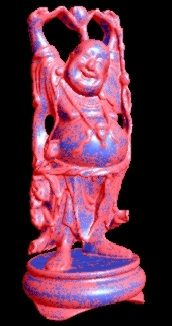 |
POP: A Hybrid Point and Polygon Rendering System for Large Data [ project site (Demo+Sample Data) ] We introduce a simple but important extension to the existing pure point rendering systems. Rather than using only points, we use both points and polygons to represent and render large mesh models. We start from triangles as leaf nodes and build up a hierarchical tree structure with intermediate nodes as points. During the rendering, the system determines whether to use a point (of a non-leaf node) or a triangle (of a leaf node) for display depending on the screen contribution of each node. (Red for points, blue for triangles in the left image.) While the points are used to speedup the rendering for distant objects, the triangles are used to ensure the quality for close objects. We also perform pre-texturing on points and triangles when we build up the tree. Our hybrid representation facilitates effective antialiasing for texture mapping. [ PDF ] IEEE Visualization 2001. |

|
Image-Based Volume Rendering
Volume rendering is considered expensive due to the huge amount of data to be processed. we present a framework of accelerating volume rendering utilizing image-based rendering technique. The first image of the lower row is fully volume rendered, called keyview; the top image is the intermediate novel view by texture mapping of the keyview onto an underlying geometry of the volume; the second image of the lower row is the final novel view by filling red colored holes of the intermediate image through ray-casting. We have demonstrated the effectiveness of our approach by applying it to a real medical system of virtual colonoscopy navigation. We have obtained an order of magnitude speedup over the traditional volume rendering. Paper
|

|
Three main thrusts: (1) volume rendering, (2) special hardware design for volume rendering, (3) image-based techniques. |
|
 |
LOD-Sprite Technique for Accelerated Terrain Rendering We present a new rendering technique, termed LOD-sprite rendering, which uses a combination of a level-of-detail (LOD) representation of the scene together with reusing image sprites (previously rendered images). Our primary application is an acceleration technique for virtual environment navigation, especially for terrain rendering in flight simulation (the left image is a typical scene). The LOD-sprite technique can be efficiently implemented in texture-mapping graphics hardware, thus the speedup is substantial by employing this technique. [ PDF ] , IEEE Visualization'99. |
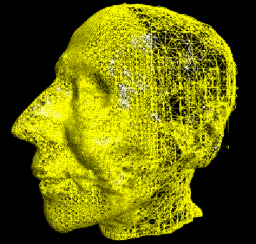 |
LOD Representation of Regular Volumes and Iso-surface Construction We present an algorithm for continuous level of detail representation of regular volumes based on a level of detail framework, that approximates volume data with different levels-of-detail tetrahedra. Conceptually, the framework is generated through a recursive subdivision of the volume data, however, it does not need any explicit storage representation --- the subdivision level relationships can be easily obtained by implicit data structures, thus gaining efficiency while avoiding large data storage. Instead of using a particular level of the LOD-Tetra framework for approximation, an error-based LOD model is employed to recursively fuse a sequence of tetrahedra from different levels. Cares are taken to maintain the topology and the smooth transition between levels during the fusion. Our approach naturally generates smooth isosurfaces and avoids crack problem suffered by the other methods. Experimental results demonstrate the effectiveness of primitive reduction and smooth transition between error threshold boundary. The left image has an error threshold of 0.0 at the left side, while 4.0 at the right side. Multiresolution Tetrahedral Framework for Visualizing Regular Volume Data [ PDF ] , IEEE Visualization'97, Phoenix, Arizona, Oct. 19-24 1997. |
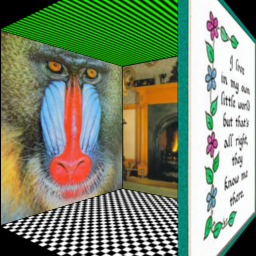 |
High Quality and Efficient Texture Mapping We present an algorithm called FAST (Footprint Area Sampling for Texturing), which is efficient as well as delivers high-quality texture mapping. By utilizing coherence between neighboring pixels, performing prefiltering, and applying an area sampling scheme, we guarantee a minimum number of samples sufficient for effective antialiasing. Unlike existing methods (e.g., MIP-map, footprint assembly), our method performs bilinear instead of trilinear interpolation to avoid over blurring. Our method has been shown to not only deliver as high quality images as adaptive supersampling, but also require lower memory bandwidth of texel access similar to MIP-map, while retaining the same efficiency as footprint assembly. Footprint Area Sampled Texturing [ PDF ] , IEEE Transactions on Visualization and Computer Graphics, vol. 10, no. 2, Mar/Apr, 2004. pp. 230-240. |
 |
Forward Perspective Image Mapping We present a new forward image warping algorithm, which speeds up perspective warping -- as in texture mapping. It processes the source image in a special scanline order instead of the normal raster scanline order. This special scanline has the property of preserving parallelism when projecting to the target image. The algorithm reduces the complexity of perspective-correct image warping by eliminating the division per pixel and replacing it with a division per scanline. The method also corrects the perspective distortion in Gouraud shading with negligible overhead. Furthermore, the special scanline order is suitable for antialiasing using a more accurate antialiasing conic filter, with minimum additional cost. The algorithm is highlighted by incremental calculations and optimized memory bandwidth by reading each source pixel only once, suggesting a potential hardware implementation. [ PDF ] , IEEE Visualization '99. |
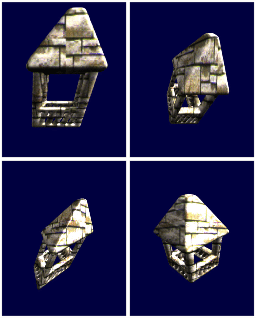 |
Image/Volume Rotation Using Shear Transformations |
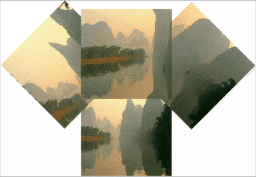 |
Navigating Through Sparse Views We investigate two problems involved in creating animation from static image/images. We first extend the work of "TIP" (in SIGGRAPH'97) to increase the freedom of modeling, thus better approximation of the underlying scene structure. Further, we study a situation where the camera is moved further into the scene and sequence of shots are taken along the path. This is opposed to previous panorama scene creation, in which pictures are obtained by rotating camera 360 degree, but fixing camera position. [ PDF ] , VRST (Symposium on Virtual Reality Software and Technology) '99. |
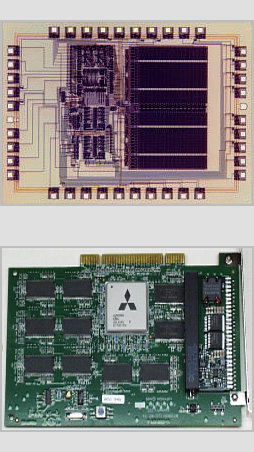 |
Architecture Design for Volume Processing and Universal 3D Rendering
Patents
|
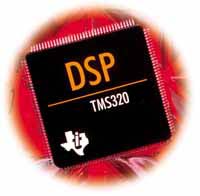
|
DSP Accelerated Volume Rendering on PC
As real-time volume rendering requires a very high computing power and memory bandwidth, many efforts are under-taken on how to reach this goal. In this project, we implement a DSP (Digital Signal Processing) based volume renderer. We employ TI (Texas Instruments)'s latest multiprocessor DSP, TMS320C80, with one master and four parallel processors. We have studied ways to accelerate volume rendering, with considerations especially on full exploration of external memory bandwidth. [ CVC Techniqual Report TR.990107 ] , Center for Visual Computing, SUNY at Stony Brook. |
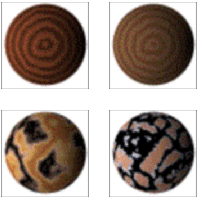
|
Texture Synthesis of Wood and Stony Wall and
Floor
In this early project, we have synthesized several kinds of textures: wood, stony wall and floor. Texture patterns can be controlled by adjusting some simple and intuitive parameters. [ Computer Generated Textures Used in Architecture ] International Conference on Modeling, Simulating & Control, MSC'93, Chengdu, China, Oct. 13-15, 1993, Vol.2 pages 71-78. [ Computer Generated Textures of Surfaces for Many Kinds of Wall and Floor ] National Symposium on Image and Graphics conference, NSIG'94, Chengdu, China, April 19-23, 1994, Vol.2 |
